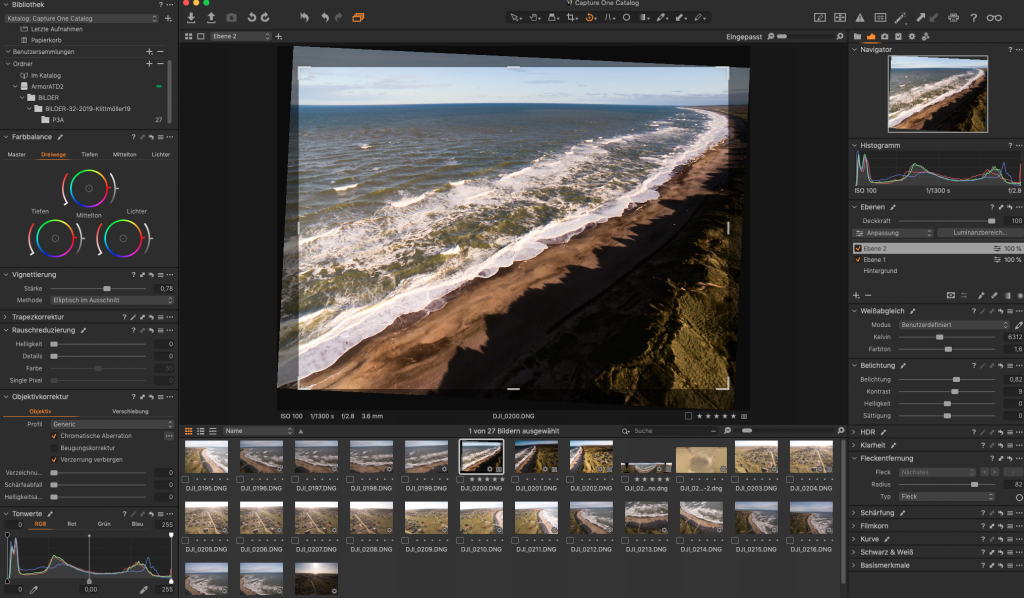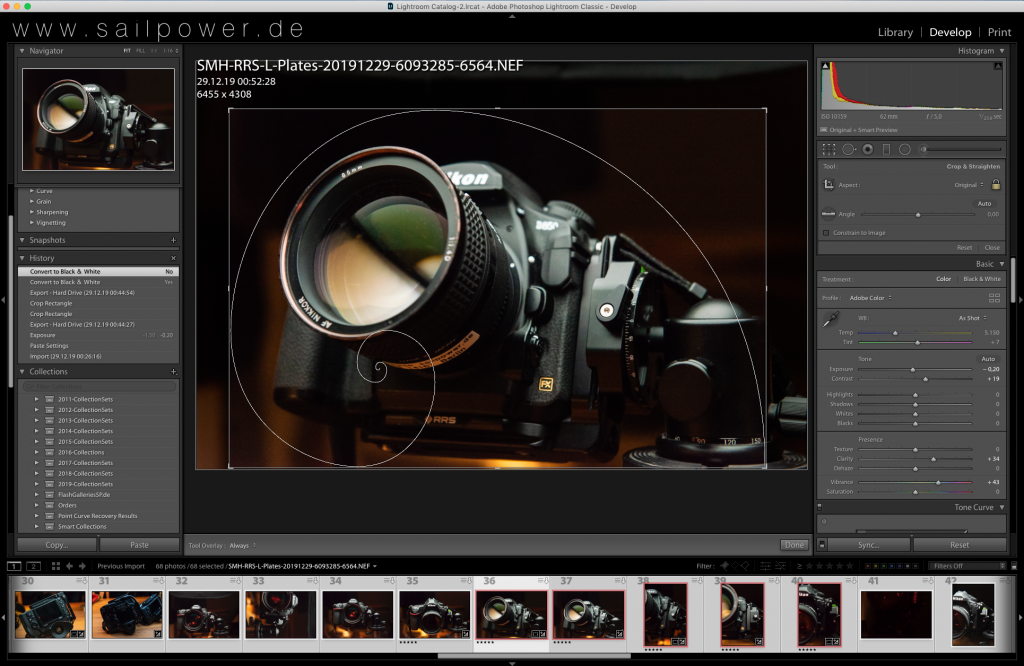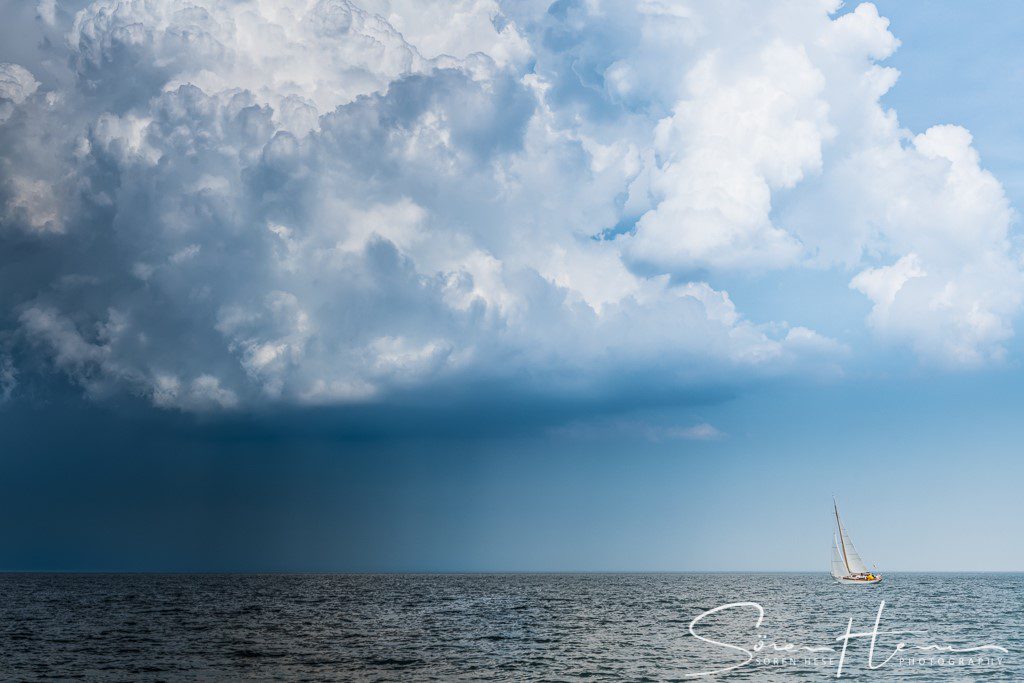Capture One & Lightroom Classic
Corona Contemplations

In winter I usually try to find some time to concentrate on some creative unpaid projects that I started in summer capturing images but where I didnt manage to get the post processing and image grading or stitching or overlays done at all. So I usually have some raw jewels sitting in my archive that I have to strongly sand and polish. Usually this is also a time where I tend to submit some research papers for publications also – so my UAV/Sat data analysis and research is usually eating away some of my time in that period of the year too).
Good opportunity to write down some bits about the raw image post processing that I usually do using my usual Raw editor (LR). As every year I also have a look at the different raw non-destructive image editing software packages. Capture One is at Version (20)20 and Lightroom now upgraded to Version LR Classic 9.2.
Lightroom vs. Capture One
The never ending discussion about “should I switch to Capture One” is clearly in a new round with the recent upgrade of LR to version 9 using now more of the GPU power to accelerate processing of RAW files and with Capture One now in Version (20)20. Some things have changed since LR6.14 but not enough to find a different scenery overall – in short:
- LR is slow with localized edits and the
- LR-Shortcut world is un-flexible but easy to get productive and
- LR puts you into the Adobe abo-jail;
- C1 is faster (better (e)GPU support) and can be easily customized with new shortcuts,
- C1 is better in color grading,
- C1 is much better for tethered shooting,
- LR has pano/hdr solution, C1 has nothing like that (btw if you want it pro go to PTGui).
- C1 is more expensive (without offering a Photoshop solution) but
- C1 also offers standalone license but with
- C1 its harder to get into a steep learning curve.
—

Interface: (depends on your needs but I would favour C1 here)
Lightroom has a static GUI that is hardly customizable at all. whereas C1 can be customized like heck. You can completely change the appearance of C1 moving the various tools to where you want them. The nice thing in C1 20 is that you have now also a scroll option for the tool palette as in LR. Thats handy sometimes and quicker than expanding a tool palette. C1 can be fully driven by keyboard shortcuts – this is one of the reasons why C1 can be faster when it comes to professional editing. If you use a software everyday you develop habits and key shortcuts are what counts here. In LR you cannot drive all functions with shortcuts and shortcuts are fixed and not changeable. I never understood why LR needs the Library vs Developer Module differentiation but in C1 it becomes apparent: if you want to have quick access to the database you need to have these panels open somehow.
—

Speed: (Advantage Capture One):
Lightroom in Version 6.14 was so slow – it was unbearable. I finally gave up with version 6.14 because I couldnt stand it anymore. Working with thousands of D850 NEFs just killed my impatient way of working – I am just not used to wait for software to react to anything I want. It got so much on my nerves that I tested LR Classic when the performance improvements where discussed and people reported that it got soooo much better. But – as usual this was not the case. LR is even now in Version 9.2 slower than Capture One. The difference isnt that big anymore but its there. This can be partly explained with the lack of efficient (e)GPU support. Importing and exporting files in LR is still way too slow. Capture One can make use of your Gaming GPU and even utilizes an eGPU on Thunderbold3 whereas LR is mainly CPU based. There is clearly an improvement using a fast GPU when working in the Developer Module in LR Classic 9 but if you start with a lot of localized adjustments than LR gets slower and slower (it doesnt help that the preferences show that my VEGA64 eGPU is detected …). Exporting 46MP NEFs to 20 MP Jepgs takes 200% of the time it takes in C1 with eGPU support. C1 hardly slows down at all when working with lots of layers and adjustments – clearly a plus imo.
Ecosystem Integration: (Advantage LR):
Here LR Classic 9 wins clearly – within this unfortunate abo model you get LR and PS for 11 Euro/Month and working with PS is for most of us necessary. C1 provides links to PS but it wont support export to PS layers or smart formats. There are more plugins avail for LR, there is more lens profile support and more cameras are supported in LR than with C1. This is the unfortunate reason why I ended up renewing my license with Adobe LR – I couldnt see me working in the future without Photoshop. I also needed the HDR and Pano functionality (but see Pano options below).
HDR and Panorama Functionality: (LR has it, C1 not so):
not avail within C1 but included in LR! If you need it frequently than there is only the Affinity and PTGui/Hugin way to get it done (AutoPano Pro is discontinued). PTGui seems also to work nicely with GPU support. Nice news: in LR you can now task the HDR processing from stacks into a batch processing routine. That way you can process hundreds of HDR stacks in one go – verrry handy this one! Made me smile for a while. Sometimes Adobe really nails it – whatever I have to say about the Abo-thing – I really love the tasking option with stacks! This makes working with lots of copter HDR files much easier and faster – so nice!
—




—

Color Editing: Advantage Capture One:
Clearly advantage C1: color editing is much more intuitive in C1. I really like the circular color editors – wonder why LR is not supporting such a tool. Its much more intuitive.
Noise Reduction: Advantage LR (compared with C1 V12/ seems on par with 2020):
Was advantage LR: now not so sure with Capture One 20. Noise reduction has been much improved in C1 Version 2020. So I feel that LR 9 and C1 20 are on par now but I havnt done a real quantitative test here.
Localised Edits:
LR is slower but easier to get started with, C1 20 is much faster and much more flexible – you can make every tool a localized edit layer – its so flexible but you easily get lost in the layer settings with C1.
Fuji Advantage: C1 seems to have the advantage over LR when working with Fuji RAW files that need a specific demosaicing algorithm. On the other hand the specific Nikon RAW file Noise reduction seems to be lacking with C1 (better in C1 2020).
Costs: (Not an important factor if you work with software on a daily basis but LR/PS is much cheaper)
LR is at 11 Euro a month and comes with PS. C1 is at 349 Euro or 220 Euro per year – so in fact its doubling the cost to switch to C1 and you loose PS.
And finally the Learning Curve: (Advantage LR): LR is easier to learn, C1 needs some time to get into it and to become productive. It provides lots of tools but you need a while to have everything sorted and organized to your needs and to memorize shortcuts.
The Wacom Trick

Integrating the Wacom Intous Pro into your workflow makes some of the complex parts of editing images much easier. I often do some very quick but complex edits to images when I am working for an event somewhere and this is usually done with some gradual layers and/or localized edits with a brush. In general this is not very precise with the mouse and localized edits with a brush would be much much better done with an Intous. Its usually not possible to do this quickly for lots of images but with Intous Pro it gets doable kind of to be fast and precise. As usual precision makes the difference here.
Working with a Wacom also mimics much better the control that you would have on a full size touch tablet – and some even say that they dont use the mouse anymore. In general I kind of agree but it needs some training to be faster with a tablet – but beeing more accurate is there immediately. Costs are now down to 300 Euro for a Pro model im M size. That is clearly all you will need for the start for image editing.

